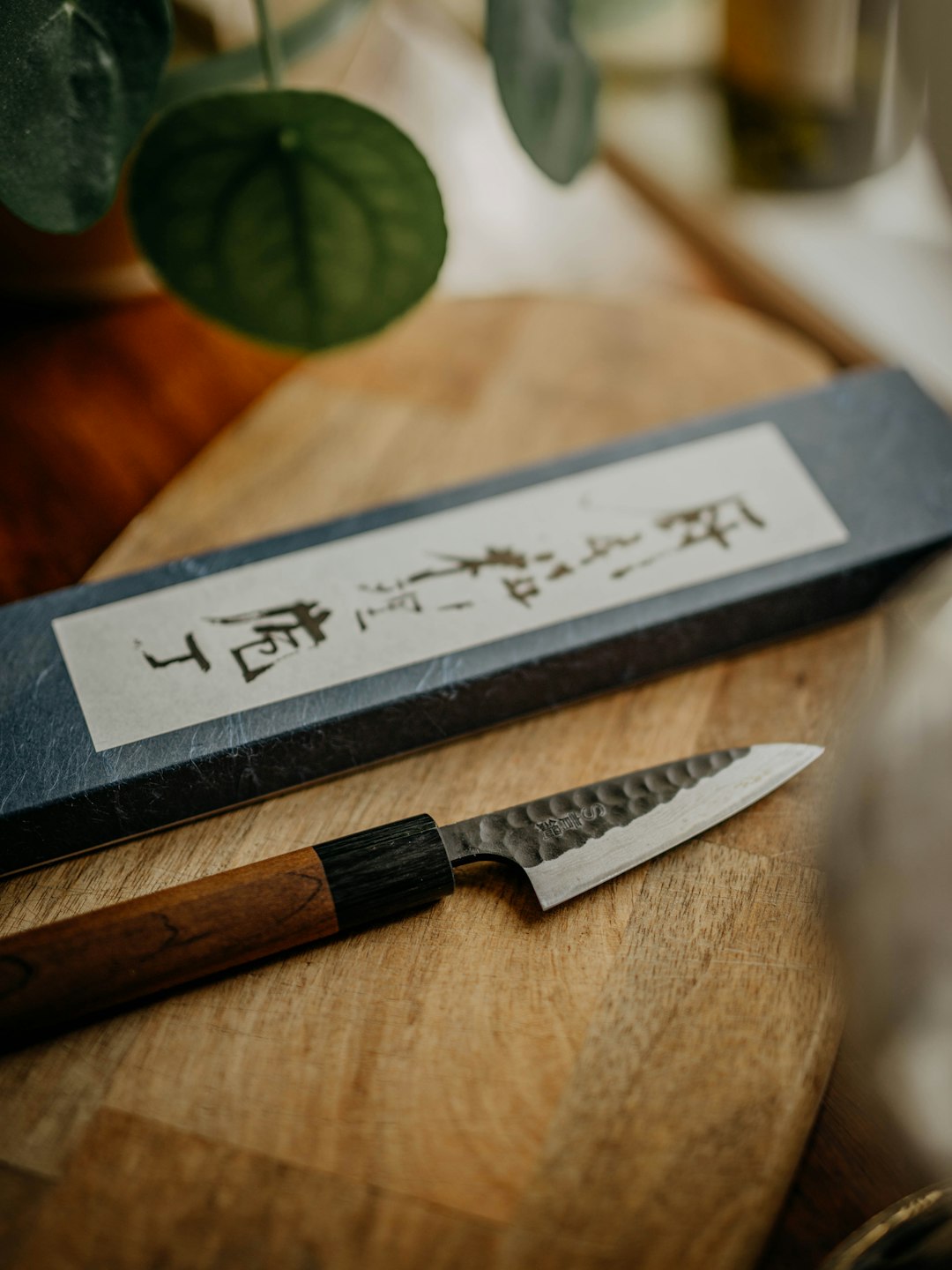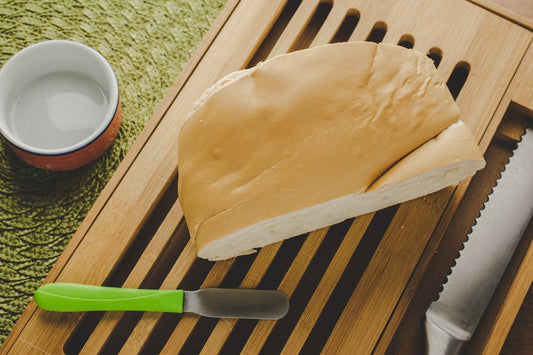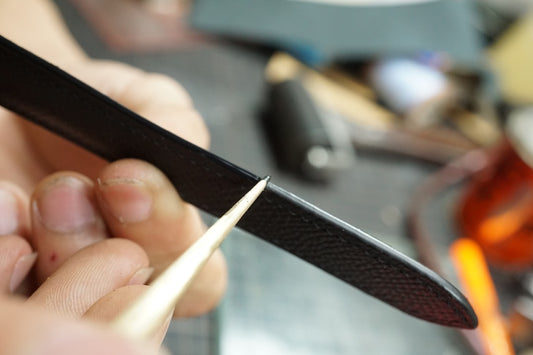
Share
Regions Famous for Japanese Knife Making: A Guide to Japan's Legendary Knife Craftsmanship
Key Takeaways
- Discover the profound history of Japanese knife craftsmanship dating back to the 5th century.
- Learn about the unique characteristics of renowned knife-making regions like Sakai, Seki, and Sanjo.
- Understand the differences between Sakai and Seki knives in terms of materials, techniques, and cultural significance.
- Find out how to experience Japanese knife workshops firsthand for an immersive cultural journey.
Table of Contents
The Rich History of Japanese Knife Craftsmanship
Understanding Japanese Knife Craftsmanship History
The art of Japanese knife making has roots stretching as far back as the 5th century. It all began in places like Sakai City, where early bladesmiths took inspiration from sword-making techniques designed for samurai warriors. Over time, the focus moved from forging weapons to crafting culinary tools essential for daily life.
-
Iron-Based Blade-Making:
The earliest Japanese knives were created by skilled artisans using iron, with methods refined through the demands of war and later, peace. -
Transition from Swords to Knives:
During feudal Japan, swordsmiths developed expertise in layered steel and heat treatment. As Japan stabilized, these skills shifted from samurai swords to kitchen knives, preserving the balance between blade hardness and flexibility. -
Advancements in Technique:
Innovations like Damascus steel—folding and layering materials—gave these knives their famous resilience and razor-sharp edges. -
Impact of Historical Change:
The Meiji Restoration in the 19th century ushered in modernization for Japan. Swordsmiths had to adapt, focusing on producing cutlery and household utensils rather than weapons. -
Regional Differences:
Each area developed its technique and style, influenced by natural resources, local culinary needs, and cultural exchange.
For more about how history shaped Japanese knife craftsmanship, you can read this detailed history of Japanese knives.
Regions Famous for Knife Making in Japan
An Overview of Regions Famous for Japanese Knife Making
Japan’s fame for outstanding cutlery stems from several distinct regional hubs. Each one contributes a unique vision and technique to Japanese knife craftsmanship history, enriching the world of kitchen tools with their specialities:
- Sakai (Osaka Prefecture)
- Seki (Gifu Prefecture)
- Sanjo (Niigata Prefecture)
- Takefu (Fukui Prefecture)
- Miki (Hyogo Prefecture)
- Tosa (Kochi Prefecture)
Let’s look at what sets each of these regions apart in the world of Japanese knife making.
Sakai (Osaka Prefecture): A Cradle of Japanese Knife Craftsmanship
Sakai’s Historical Significance
Sakai is one of the oldest centers of Japanese knife craftsmanship history. Its roots run back to the 5th century. It became a crucial hub for sword-making in the 16th century, powering the needs of Japan’s samurai.
- Gained fame for producing katana swords.
- Shifted focus to making specialized tobacco knives during the Edo period, supporting both culinary and cultural needs.
- The city’s role evolved, moving from weaponry to kitchen tools as demand changed.
You can discover more from Sakai City’s own knife history.
Sakai’s Knife-Making Specialty
- Known for its traditional single-bevel knives, designed for precise culinary tasks, such as slicing fish for sushi.
- Sakai knives are not the work of a single craftsman. Instead, multiple artisans—each a specialist—take responsibility for different production stages, from forging to sharpening to handle making.
- The use of high-carbon steel and layered construction methods ensures blade sharpness and durability.
Hand-Forged Techniques and Global Reputation
- Sakai’s process emphasizes hand-forging, using century-old methods.
- Knives from this region are famous among world-class chefs for their unmatched performance, fine edge retention, and meticulous attention to detail.
Seki (Gifu Prefecture): Blending Tradition and Innovation
Seki’s Origins and Natural Resources
Seki’s reputation as a region famous for knife making reaches back to the Kamakura Period (13th century). Swordsmiths were drawn here by Seki’s:
- Pure, clean water—essential for blade cooling
- Pine charcoal—critical for forging
- High-quality iron sand—forming the basis of great steel
Explore further with this look at Seki’s knife history.
Seki’s Specialty
- Seki stands out for making both traditional Japanese knives and Western-style knives, catering to a diverse market.
- The city became a center for large-scale production, especially mass-market stainless steel blades.
- Seki’s output is vital for both home kitchens in Japan and abroad.
Techniques and Technological Leadership
- Maintains a balance between hand-forged tradition and the latest production technology.
- Seki is a leader in exporting Japanese knives, setting trends for blade shapes and steel types globally.
Sanjo (Niigata Prefecture): Working Metal into Everyday Art
Sanjo’s Start in Blacksmithing
Sanjo’s story differs from Sakai and Seki.
- Its metalworking culture began in the early 17th century. Blacksmiths came together to solve local flooding by creating nails.
- By the 1650s, this practical ingenuity moved the region toward producing knives, sickles, and saws—tools for life and survival.
Learn more about this tradition at the Sanjo Blacksmith Tradition page.
Sanjo’s Knife-Making Specialties
- Sanjo is known for developing two major types of blades:
- Uchihamono (forged blades): Crafted by hand with hammered layers for strength and flexibility.
- Nukihamono (stamped blades): Mass-produced by punching shapes from sheets of metal, making sharp, affordable knives for every household.
- Sanjo was one of the first regions to make stainless steel kitchen knives easily available to ordinary homes.
Takefu (Fukui Prefecture): Where Tradition and Collaboration Meet
- Takefu is a region famous for innovative steel and stylish, modern kitchen knives.
- The Takefu Knife Village is a community where artisans work side-by-side, preserving old techniques while introducing new ones.
- The region is renowned for its collaborative spirit, drawing master craftsmen and young talent to share knowledge.
Miki (Hyogo Prefecture): Broad Expertise in Metal Tools
- With a legacy dating to the 5th century, Miki is not just known for knives but also carpentry and agricultural tools.
- Blacksmiths here make a diverse range of forged implements, keeping ancient traditions alive in modern times.
Tosa (Kochi Prefecture): Rustic Excellence
- From the late 16th century, Tosa became known for hand-forged knives and tools that retain a “rustic,” traditional look.
- Knives from Tosa are valued for their sturdy construction and handmade charm.
Sakai vs Seki Knife Differences
Deep Dive: Sakai vs Seki Knife Differences
Japanese kitchen knives from Sakai and Seki are both respected worldwide, yet each region has distinct approaches that create noticeable differences. Here’s how they compare in materials, craftsmanship, and culture.
Materials Used in the Knife-Making Process
-
Sakai:
- Relies on high-carbon steel and traditional layered (Damascus) construction.
- Focuses on time-proven forging techniques to yield extremely sharp, resilient blades.
-
Seki:
- Uses a range of materials, from traditional high-carbon steel to modern stainless steel alloys.
- Adapts steel choices to suit a variety of knife styles and durability needs.
Techniques and Craftsmanship Styles
-
Sakai:
- Artisans specialize in individual processes, such as forging, grinding, or attaching the handle.
- The knives undergo intensive hand-forging, careful shaping, and manual sharpening.
-
Seki:
- Blends classic methods with state-of-the-art machinery.
- Produces knives in higher volumes while keeping quality and consistency.
Knife Design and Intended Uses
-
Sakai:
- Primarily makes single-bevel knives for professional Japanese cuisine. This edge style is perfect for ultra-precise tasks like sushi cutting.
- Known for making the yanagiba, deba, and usuba—all prized by professional chefs for detail work.
-
Seki:
- Manufactures both single-bevel and double-bevel (Western-style) knives.
- Offers versatility with knives catering to both home cooks and culinary professionals worldwide.
Cultural Significance and Global Reputation
-
Sakai:
- Represents the height of Japanese knife tradition—often considered the “gold standard” for professional-grade kitchen knives.
- Regional pride and generational skills run deep, reinforcing Sakai’s prestige both in Japan and overseas.
-
Seki:
- Widely known for innovation, adaptability, and capacity to deliver both craftsmanship and efficiency.
- Recognized as a key force in making Japanese knives popular internationally.
Including both in your collection gives a taste of Japan’s full range of culinary blade artistry.
Visiting Japanese Knife Workshops
Exploring Knife Making Up Close: Visiting Japanese Knife Workshops
If you want to experience regions famous for knife making firsthand, traveling to Japan to visit traditional knife workshops offers unmatched insight and inspiration.
Why Visit Japanese Knife Workshops?
-
Cultural Immersion:
See up close how ancient skills are handed down from master to apprentice. -
Educational Experience:
Watch the forging, shaping, sharpening, and handle-making processes step by step. -
Hands-On Opportunities:
Some workshops let guests try simple forging or knife-sharpening under expert guidance.
What to Expect on a Workshop Tour
- A guided look at everything from selecting raw steel to finishing the blade edge.
- Live demonstrations by blacksmiths, often describing how specific hammer blows and temperature changes affect the final product.
- Exhibits on regional history and specialities, explaining why certain techniques develop in each area.
Popular Places to Visit
Sakai (Osaka Prefecture):
- Many workshops welcome visitors for guided tours.
- The Sakai City Traditional Crafts Museum includes interactive exhibits and live demonstrations by master knife artisans.
- Meet multi-generation blacksmiths and sharpeners at work.
Seki (Gifu Prefecture):
- The Seki Sword Traditional Museum lets you watch knife and sword making, see historical exhibits, and explore both heritage and modern innovation.
- Factory tours in Seki give insight into large-scale knife production and blending of old and new.
Takefu (Fukui Prefecture):
- At Takefu Knife Village, you can talk with both emerging and established bladesmiths, and sometimes try forging or sharpening your own blade.
Sanjo (Niigata Prefecture):
- Several blacksmiths in Sanjo allow visitors to participate in forging or to observe knife production up close.
Renowned Master Craftsmen and Hands-On Experience
- In these workshops, you can often meet living “National Treasures”—master craftsmen who hold official recognition for preserving traditional skills.
- Many workshops host events where modern artisans collaborate, teach young blacksmiths, and pass on trade secrets.
These experiences provide a new appreciation for the remarkable artistry behind every Japanese kitchen knife.
Conclusion
The Value of Regional Japanese Knife Making
Understanding the regions famous for knife making reveals the incredible diversity and depth of Japanese knife craftsmanship history. Each area—Sakai, Seki, Sanjo, Takefu, Miki, and Tosa—brings its own strengths, innovating while honoring age-old traditions.
- Sakai excels in professional-grade, hand-forged knives, cherished by chefs and collectors.
- Seki leads with its ability to blend tradition and modernity, producing knives for kitchens around the world.
- Sanjo stands out for its versatility, pioneering new techniques for both artisan and everyday use.
- Other regions like Takefu, Miki, and Tosa add stylistic flair, collaborative energy, and rustic charm to Japan’s overall tradition.
Japanese knife making is more than just blade production—it's a harmonious balance of history, cultural pride, and continuous innovation. Every knife carries with it a piece of Japan’s past and future.
Why Own a Japanese Knife?
Owning a Japanese knife means bringing a piece of living history and cultural art into your home. It combines utility with artistic expression, transforming how you cook and how you appreciate craftsmanship.
Planning Your Journey
If you are passionate about food, culture, or craftsmanship, visiting regions famous for knife making in Japan is truly memorable. Explore the workshops and museums, meet real artisans, and perhaps even forge your own blade. Take the journey to appreciate firsthand what makes Japanese knife craftsmanship history so inspiring and enduring.
Additional Resources
Dive Deeper: Books, Documentaries, and Websites
Expand your understanding of Japanese knife craftsmanship with these recommendations:
Books
- "The Craft of the Japanese Sword" by Leon and Hiroko Kapp: A detailed look at knife and sword making.
- "Japanese Kitchen Knives: Essential Techniques and Recipes" by Hiromitsu Nozaki: Practical use and care guide for Japanese knives.
Documentaries
- "Japanese Sword Forging": Educational films (often on NHK World) covering the forging process.
- "The Secret World of Japanese Swordsmiths": Profiles of artisans preserving traditional skills.
Websites
- Japan Bladesmith Association: Find certified artisans and workshops.
- National Museum of Japanese History: Online exhibits and resources about Japanese history and craftsmanship.
Museums and Exhibitions Showcasing Japanese Knives
- Seki Sword Traditional Museum (Gifu Prefecture) — Explore Seki’s rich knife and sword-making legacy.
- Sakai City Traditional Crafts Museum (Osaka Prefecture) — Exhibits and live demonstrations of Sakai’s metalworking artistry.
- Japanese Knife Museum (Niigata Prefecture) — Deep dive into Sanjo’s regional history of knife making.
FAQ
What makes Japanese knives different from other knives?
Japanese knives are renowned for their sharpness, precision, and the high-quality craftsmanship involved in their making. They often use high-carbon steel and traditional forging techniques that result in superior edge retention and cutting performance.
Can I visit knife workshops in Japan as a tourist?
Yes, many knife workshops in regions like Sakai, Seki, and Takefu welcome visitors. It's recommended to check ahead for tour availability and any necessary reservations.
What is the difference between single-bevel and double-bevel knives?
Single-bevel knives are sharpened on one side only, allowing for extremely precise cuts, ideal for tasks like slicing sushi. Double-bevel knives are sharpened on both sides and are more versatile for general use.
How should I care for my Japanese knife?
Hand-wash your knife with mild soap and water, dry it immediately, and store it safely. Regular honing and occasional professional sharpening will maintain its edge. Avoid cutting hard items like bones or frozen foods.
Are Japanese knives suitable for home cooks?
Absolutely! While they are prized by professional chefs, Japanese knives can greatly enhance the cooking experience for home cooks due to their sharpness and ease of use.


